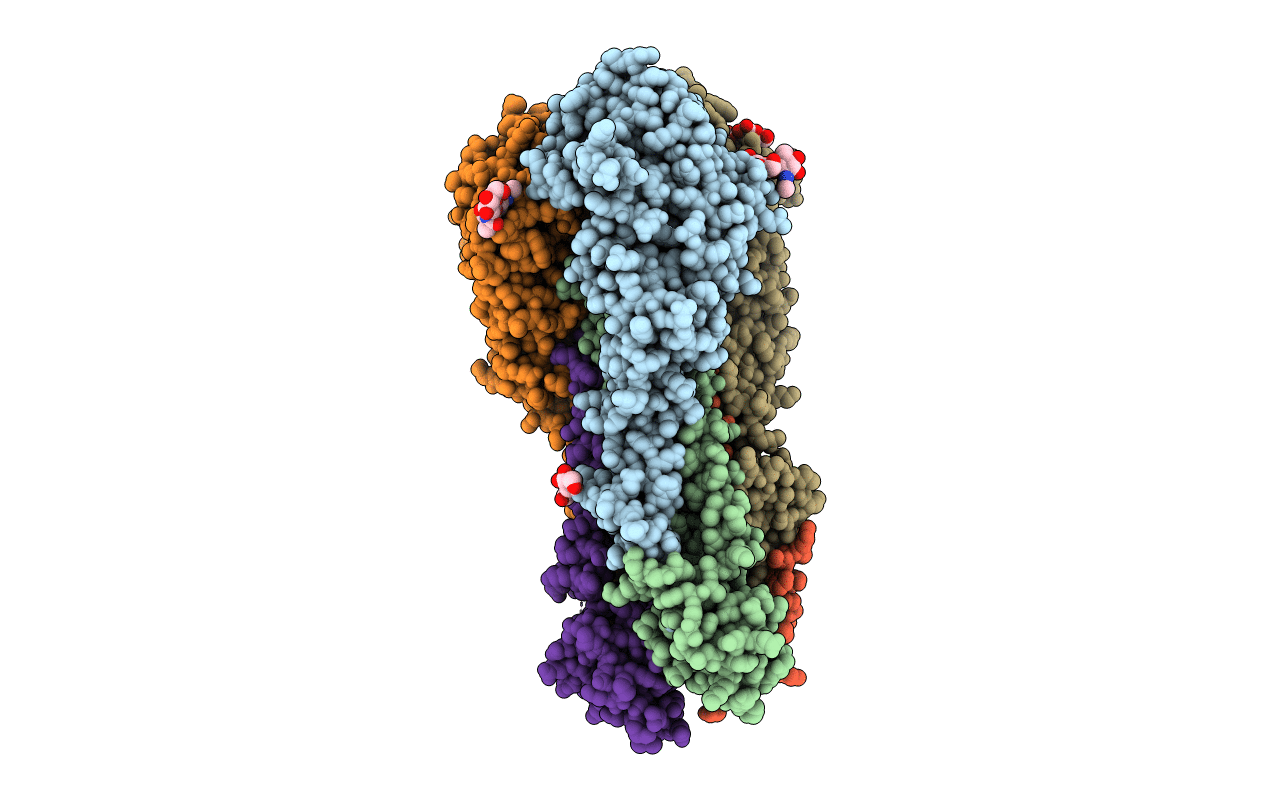
Deposition Date
2018-07-26
Release Date
2019-06-19
Last Version Date
2024-10-16
Entry Detail
PDB ID:
6E7H
Keywords:
Title:
Crystal structure of H5 hemagglutinin mutant Y161A from A/Viet Nam/1203/2004 H5N1 influenza virus in complex with 3'-GcLN
Biological Source:
Source Organism:
Influenza A virus (A/Viet Nam/1203/2004(H5N1)) (Taxon ID: 284218)
Host Organism:
Method Details:
Experimental Method:
Resolution:
3.30 Å
R-Value Free:
0.28
R-Value Work:
0.23
R-Value Observed:
0.24
Space Group:
P 1 21 1


